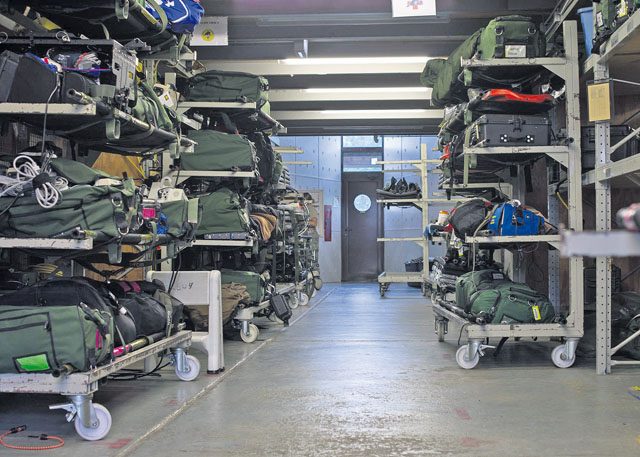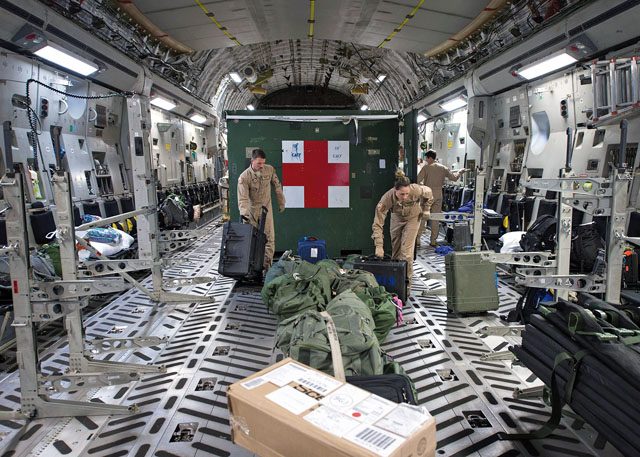
In the frigid and dim cargo hold of a C-17 Globemaster III, Airmen strive to save the lives of injured service members while being tormented by the deafening rumble of four engines. These Airmen are the patients’ best option for medical care and transportation to a hospital.
The 10th Expeditionary Aeromedical Evacuation Flight, under the 13th Operations Support Squadron, transports injured service members via aircraft from deployed locations to Landstuhl Regional Medical Center or other accommodating hospitals while providing medical support.
“We could find ourselves in the back of C-130, KC-135, C-17 and possibly even C-21A (aircraft),” said Senior Master Sgt. Theresa Sheheen, flight superintendent. “The back of a plane isn’t the most ideal medical facility, but that’s what makes the job interesting.”
The most ‘unhospital-like’ places are where members of the 10 EAEF set up their work stations and execute their duties to ensure the recovery, and at times survival, of patients within their area of responsibility. Upon being alerted, the team has just a few hours to be on the plane and ready to go.
Within that time frame, Airmen going on the mission must pack a 72-hour bag, attend an intelligence brief, attend a crew brief, check all their equipment and supplies before loading the aircraft, load the aircraft, check equipment and supplies again, and perform other ancillary tasks.
“There are checklists we follow to ensure that everything is properly checked, prepared and completed for the mission,” Sheheen said. “The checklists provide step by step instructions for just about everything we do.”
Even though a lot of time and dedication go into preparedness, not everything can always be accounted for.
“The most stressful thing about our job is the unknown,” said (Dr.) Maj. Jason Merrell, critical care air transportation team physician. “There may be a mission where we don’t get notification of a patient’s condition or they may take a turn for the worse. We have to prepare for scenarios we might not expect and stay one step ahead.”
Despite the challenges, the job is very rewarding to those who do it.
“We save lives and get people back to good health,” Merrell said. “It’s a great feeling to know that we contribute to that.”








